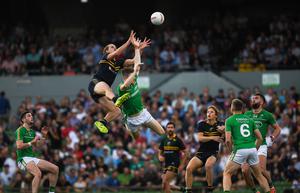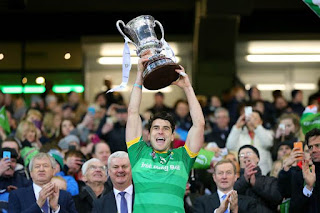This week sees the culmination of Dr. Eoin Ryan's fascinating review of Ice Hockey - its history, development and, today, the Irish aspects.
For Eoin's first installment in this series, click on the link below:
https://sportyman2020.blogspot.com/2020/10/the-story-of-ice-hockey-and-its-irish.html
And his second installment is available here:
https://sportyman2020.blogspot.com/2020/10/part-2-of-dr-eoin-ryan-ice-hockey.html
For me, this series has covered at least a dozen areas of interest, from the mysterious Icelandic game of knattleikr, a potential forerunner of our own hurling, right through to the strong links between Ireland (especially Eoin's own locale in the southeast) and the eastern shores of Canada, as described in this week's blog.
So with many thanks and much admiration, it's over to Eoin again...
So is Ice Hockey
Irish?
There has been much debate- some of it heated-
as to the exact origins of the sport. Most sources on the history of the game
are somewhat vague. Some refer to it as having been adapted from British ball and
stick games by colonizers, others refer to it as 'a form of Shinty on Ice’. Most
sources trace it to ‘Northern European ball and stick games’
One school of thought is that Irish Emigrants brought hurling to the new world and this was the game from which Ice Hockey evolved.
There is no doubt that Eastern Canada, in particular
Newfoundland and Nova Scotia, received huge waves of Irish people. The first
documented wave was in the early 1700s, comprising mostly of Ulster Scots. The
second came in the early 1800s, with most people having embarked on the trip
from the port of Waterford. As a result of this, immigrants came largely from
Waterford, Tipperary, Kilkenny and Wexford- all counties with a long and passionate attachment to hurling. To
this day, 20% of Newfoundlanders claim Irish heritage. Gaelic was spoken widely
in the area in the 1800s, and Newfoundland is the only place outside Europe
with a distinct Gaelic name- Talamh an Eisc (Land of the Fish/Fishing).
Indeed, Eastern Canada boasts the only Gaeltacht outside Ireland. Tamworth,
Ontario is home to ‘Gaeltacht Bhaile na hEireann’ or ‘Permanent North American
Gaeltacht’, although the amount of Gaeilge spoken is dubious. Irish surnames
remain commonplace, and it is said that some areas retain a distinctly
Waterford, Kilkenny or Tipperary accent to this day.
In addition to language and accents, it is
known the Irish brought their songs and culture, and folk music from the region
borrows heavily from the Celtic tradition.
From this it is no great leap to assume they also brought their pastimes.
It seems hurling was played in Windsor, Nova
Scotia at King’s College School, under the guardianship of William Cochran.
Cochran, born outside Omagh, Co. Tyrone in 1757, was a Church of Ireland
minister and served as president of Kings College for more than 40 years.
Windsor claims to be the place where modern hockey was invented. Its
‘Birthplace of Hockey’ Website and museum state:
‘One of Canada’s premier hockey
destinations: Windsor Nova Scotia. The place where the game evolved from
hurley-on-ice (played locally, on Long Pond c1800) to the modern game played
worldwide.’
This claim is bolstered by an alumnus of the
school, Thomas Chandler Haliburton, in his 1844 novel ‘The Atachee’, which
contains the following quote:
‘…you boys let our racin’ and yelpin’,
hollering’ and whoopin’ like mad with pleasure and the play-ground, and the
game at base in fields or hurling on the long pond on the ice’
The website claims hurling was popular among
the boys at the school in the summer months when weather would allow, and they
switched to ‘skating on the long pond’ in the frozen winters. It further
suggests that it wasn’t long before both activities were combined and
‘hurley-on-ice’ soon developed.
In his book ‘The Clash of the Ash on Foreign
Fields’, Seamus King asserts:
‘So it would seem the first men to have struck a ball in the new world were sons if Waterford, helped it is said by other adventurous Mooncoin (Co. Kilkenny) men from across the river (Suir).
The Canadian-Irish population retained an
affinity for the game that persists to this day. The Toronto Maple Leafs, a
franchise that has won The Stanley Cup (NHL title) on 13 occasions began their
life as the Toronto St. Patricks, and in Montreal, the Shamrocks competed
initially in amateur leagues before turning professional. Probably the most
successful Irish Olympian you have never heard of competed for Canada. Geraldine
Heaney, who was born in Lurgan, Co. Armagh and emigrated to Canada when she was
one year old, played club hockey with the Toronto Aeros from 1980-2004 as well
as internationally. She holds seven IIHF World Titles as well as 2 Olympic
medals (one silver, one gold) and was inducted into the IIHF Hall of Fame.
The theory of evolution from hurling is flatly
rejected by the Society for International Hockey Research. In a recent report
relating to the foundation of ice hockey and Windsor as its birth place, the
report concluded:
‘If this reference is accepted as a
forerunner of hockey, then so too must stick and ball games played on ice in
Europe in the 16th, 17th and 18th centuries by participants in skates……. We do
not accept these activities as hockey, nor do we accept as hockey ‘hurley in
the long pond on the ice’ if indeed it was ever played at all’, dismissing the theory as ‘only conjecture’.
Ice hockey on the Island of Ireland
Seventy miles away from the birthplace of William Cochran, Ice Hockey has gained a foothold on the island- namely the Belfast Giants. The only professional ice hockey team on the island of Ireland, the Giants were founded in the year 2000 by two Canadian business men, and initially its roster consisted exclusively of Canadian-born players (while this remains the trend, local players have joined the team as well as others from Britain). The idea was conceived in the post-Good Friday Northern Ireland, in tandem with the modernising and rebuilding of a city scarred by years of violence. The showpiece for the new Belfast was the Titanic quarter, with the regeneration of the old shipyard area of the city, which included the museum dedicated to the ill-fated ship as well as the SSE Arena, where the Giants play home games.
The team originally competed in the now disbanded British Superleague and now take part in the Elite Ice Hockey League, with teams from all four nations of the United Kingdom. The franchise has proven successful on the rink, clocking up 5 league victories since its inception, if not always economically, having had to overcome seemingly never-ending financial difficulties. The Giants were envisaged as a non-sectarian sport for the whole community to enjoy, moving away from the idea that Republicans played GAA and Unionists participated in rugby and soccer. The team strip is decidedly non-partisan, avoiding colours or patterns that could be viewed as representing any one political affiliation; flags or banners which display any notion of sectarianism are banned during games and God Save the Queen is not played before home games.
Fionn Mc Cumhaill, albeit anglicised as Fionn McCool, takes his place as team mascot, and the club motto reads ‘In the land of the Giants, everyone is equal'. The efforts of the Giants have been praised internationally, notably by the Journal of Peacebuilding and Development which comments on the ‘normalisation of interactions occurring between supporters who are willing to purchase a ticket beside someone to whom they are politically opposed.’ And Belfast's population has done just that- with average crowds of more than 4,500 spectators.
South of the border, Ice Hockey is regulated by
the Irish Ice Hockey Association. One of the biggest obstacles to the sport is
the lack of facilities in the Republic. The Dundalk Ice Dome opened its doors to
skaters in 2006 with the aim of becoming the centre of excellence for ice hockey
in Ireland. The rink closed its doors in 2010, with devastating consequences
for Irish ice hockey. The Irish Ice hockey Association has been a member of
IIHF since 1996 and remains so. Our mens international team played its first
game in 2004, loosing 8-3 to Mexico, and the women’s team first played in 2011.
Neither team have competed since as under IIHF rules, Ireland, without an ice
rink does not meet the minimum standards. While this has undoubtedly dampened
the sport, it has by no means ended it in the Republic of Ireland with 8 clubs
still training and competing in in-line hockey events. The last Irish Ice
hockey league was played on ice in 2010. There are plans for the Ice Dome in
Dundalk to reopen under new management, but at the time of writing, this has
not yet come to fruition.
Ice hockey has had quite an evolution, from the
ancient Norse Sagas to the global phenomena it is today. There is little doubt
that Ireland and its people wove their narrative and culture into the fabric of
what is is today, be that through the shared history of stick and ball games,
or as its direct forerunner if you are to believe the Windsor theory. For its
part, ice hockey made its way back to this island to help heal our divisions
and look to the future. No doubt, both internationally and domestically, ice
hockey has many tales to tell yet.




















































